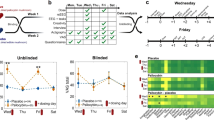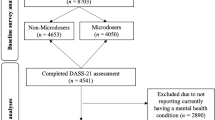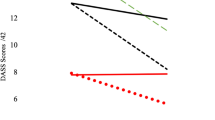Abstract
The potent analgesic effects of cannabis-like drugs1,2,3,4 and the presence of CB1-type cannabinoid receptors in pain-processing areas of the brain and spinal cord5,6 indicate that endogenous cannabinoids such as anandamide7 may contribute to the control of pain transmission within the central nervous system (CNS)8. Here we show that anandamide attenuates the pain behaviour produced by chemical damage to cutaneous tissue by interacting with CB1-like cannabinoid receptors located outside the CNS. Palmitylethanolamide (PEA), which is released together with anandamide from a common phospholipid precursor9, exerts a similar effect by activating peripheral CB2-like receptors. When administered together, the two compounds act synergistically, reducing pain responses 100-fold more potently than does each compound alone. Gas-chromatography/mass-spectrometry measurements indicate that the levels of anandamide and PEA in the skin are enough to cause a tonic activation of local cannabinoid receptors. In agreement with this possibility, the CB1 antagonist SR141716A and the CB2 antagonist SR144528 prolong and enhance the pain behaviour produced by tissue damage. These results indicate that peripheral CB1-like and CB2-like receptors participate in the intrinsic control of pain initiation and that locally generated anandamide and PEA may mediate this effect.
This is a preview of subscription content, access via your institution
Access options
Subscribe to this journal
Receive 51 print issues and online access
$199.00 per year
only $3.90 per issue
Buy this article
- Purchase on Springer Link
- Instant access to full article PDF
Prices may be subject to local taxes which are calculated during checkout





Similar content being viewed by others
References
Martin, B. R., Balster, R. L., Razdan, R. K., Harris, L. S. & Dewey, W. L. Behavioral comparisons of the stereoisomers of tetrahydrocannabinols. Life Sci. 20, 565–574 (1981).
Martin, W. J., Lai, N. K., Patrick, S. L., Tsou, K. & Walker, J. M. Antinociceptive actions of cannabinoids following intraventricular administration in rats. Brain Res. 629, 300–304 (1993).
Tsou, K. et al. Suppression of noxious stimulus-evoked expression of FOS protein-like immunoreactivity in rat spinal cord by a selective cannabinoid agonist. Neuroscience 70, 791–798 (1996).
Lichtman, A. H., Cook, S. A. & Martin, B. R. Investigation of brain sites mediating cannabinoid-induced antinociception in rats: evidence supporting periaqueductal gray involvement. J. Pharmacol. Exp. Ther. 276, 585–593 (1996).
Herkenham, M. et al. Cannabinoid receptor localization in brain. Proc. Natl Acad. Sci. USA 87, 1932–1936 (1990).
Tsou, K., Brown, S., Sañudo-Peña, M. C., Mackie, K. & Walker, J. M. Immunohistochemical distribution of cannabinoid CB1 receptors in the rat central nervous system. Neuroscience 83, 393–411 (1998).
Devane, W. et al. Isolation and structure of a brain constituent that binds to the cannabinoid receptor. Science 258, 1946–1949 (1992).
Richardson, J. D., Aanonsen, L. & Hargreaves, K. M. Hypoactivity of the spinal cannabinoid system results in NMDA-dependent hyperalgesia. J. Neurosci. 18, 451–457 (1998).
Di Marzo, V. et al. Formation and inactivation of endogenous cannabinoid anandamide in central neurons. Nature 372, 686–691 (1994).
Fields, H. L. Pain(McGraw-Hill, New York, (1987)).
Stein, C. The control of pain in peripheral tissue by opioids. New Engl. J. Med. 332, 1685–1690 (1995).
Dubuisson, D. & Dennis, S. G. The formalin test: a quantitative study of the analgesic effects of morphine, meperidine, and brain stem stimulation in rats and cats. Pain 4, 161–174 (1977).
Dickenson, A. H. & Sullivan, A. F. Subcutaneous formalin-induced activity of dorsal horn neurones in the rat: differential response to an intrathecal opiate administered pre or post formalin. Pain 30, 349–360 (1987).
Rosland, J. H., Tjølsen, A., Maehle, B. & Hole, K. The formalin test in mice: effect of formalin concentration. Pain 42, 235–242 (1990).
Coderre, T. J. & Melzack, R. The contribution of excitatory amino acids to central sensitization and persistent nociception after formalin-induced tissue injury. J. Neurosci. 12, 3665–3670 (1992).
Rinaldi-Carmona, M. et al. SR 144528, the first potent and selective antagonist of the CB2 cannabinoid receptor. J. Pharmacol. Exp. Ther. 284, 644–650 (1998).
Cravatt, B. F. et al. Molecular characterization of an enzyme that degrades neuromodulatory fatty-acid amides. Nature 384, 83–87 (1996).
Beltramo, M. et al. Functional role of high-affinity anandamide transport, as revealed by selective inhibition. Science 277, 1094–1097 (1997).
Cadas, H., di Tomaso, E. & Piomelli, D. Occurrence and biosynthesis of endogenous cannabinoid precursor, N-arachidonoyl phosphatidylethanolamine, in rat brain. J. Neurosci. 17, 1226–1242 (1997).
Schmid, H. H. O., Schmid, P. C. & Natarajan, V. The N-acylation-phosphodiesterase pathway and cell signalling. Chem. Phys. Lipids 80, 133–142 (1996).
Aloe, L., Leon, A. & Levi-Montalcini, R. Aproposed autacoid mechanism controlling mastocyte behaviour. Agents Actions 39, C145–C147 (1993).
Mazzari, S., Canella, R., Petrelli, L., Marcolongo, G. & Leon, A. N-(2-hydroxyethyl)hexadecanamide is orally active in reducing edema formation and inflammatory hyperalgesia by down-modulating mast cell activation. Eur. J. Pharmacol. 300, 227–236 (1996).
Facci, L. et al. Mast cells express a peripheral cannabinoid receptor with differential sensitivity to anandamide and palmitoylethanolamide. Proc. Natl Acad. Sci. USA 92, 3376–3380 (1995).
Showalter, V. M., Compton, D. R., Martin, B. R. & Abood, M. E. Evaluation of binding in a transfected cell line expressing a peripheral cannabinoid receptor (CB2): identification of cannabinoid receptor subtype selective ligands. J. Pharmacol. Exp. Ther. 278, 989–999 (1996).
Munro, S., Thomas, K. L. & Abu-Shaar, M. Molecular characterization of a peripheral receptor for cannabinoids. Nature 365, 61–65 (1993).
Landsman, R. S., Burkey, T. H., Consroe, P., Roeske, W. R. & Yamamura, H. I. SR141716A is an inverse agonist at the human cannabinoid CB1 receptor. Eur. J. Pharmacol. 334, R1–R2 (1997).
Stella, N., Schweitzer, P. & Piomelli, D. Asecond endogenous cannabinoid that modulates long-term potentiation. Nature 388, 773–778 (1997).
Giuffrida, A. & Piomelli, D. Isotope dilution GC/MS determination of anandamide and other fatty acylethanolamides in rat blood plasma. FEBS Lett. 422, 373–376 (1998).
Jaggar, S. I., Hasnie, F. S., Sellatwray, S. & Rice, A. S. C. The antihyperalgesic actions of the cannabinoid anandamide and the putative CB2 receptor agonist palmitoylethanolamide in visceral and somatic inflammatory pain. Pain(in the press).
Acknowledgements
We thank P. Cimminiello, F. De Seta and V. Piscicelli for experimental assistance, and M. Beltramo, A. Makriyannis, L. Sorrentino and N. Stella for discussion. Supported by Neurosciences Research Foundation (A.G. and D.P.), which receives major support from Novartis, and by MURST (G.L.R. and A.C.).
Author information
Authors and Affiliations
Corresponding author
Rights and permissions
About this article
Cite this article
Calignano, A., Rana, G., Giuffrida, A. et al. Control of pain initiation by endogenous cannabinoids. Nature 394, 277–281 (1998). https://doi.org/10.1038/28393
Received:
Accepted:
Issue Date:
DOI: https://doi.org/10.1038/28393
This article is cited by
-
Activation of CB1R alleviates central sensitization by regulating HCN2-pNR2B signaling in a chronic migraine rat model
The Journal of Headache and Pain (2023)
-
Anti-nociceptive potential of an isatin-derived dual fatty acid amide hydrolase-monoacylglycerol lipase inhibitor
Pharmacological Reports (2023)
-
Impact of exercise on brain neurochemicals: a comprehensive review
Sport Sciences for Health (2023)
-
Role of the endocannabinoid system in the pathophysiology of endometriosis and therapeutic implications
Journal of Cannabis Research (2022)
-
The role of endocannabinoids in consolidation, retrieval, reconsolidation, and extinction of fear memory
Pharmacological Reports (2021)
Comments
By submitting a comment you agree to abide by our Terms and Community Guidelines. If you find something abusive or that does not comply with our terms or guidelines please flag it as inappropriate.



